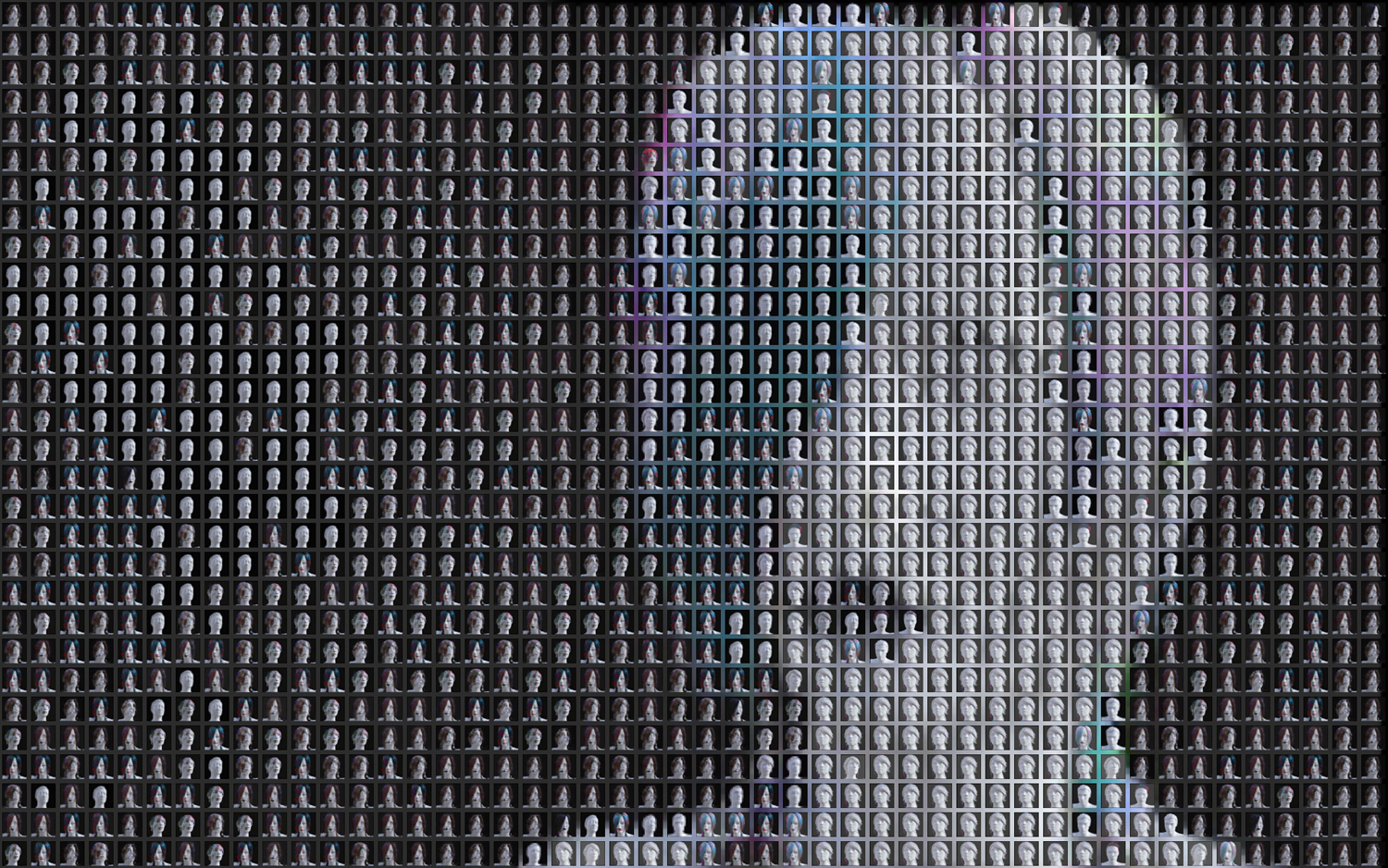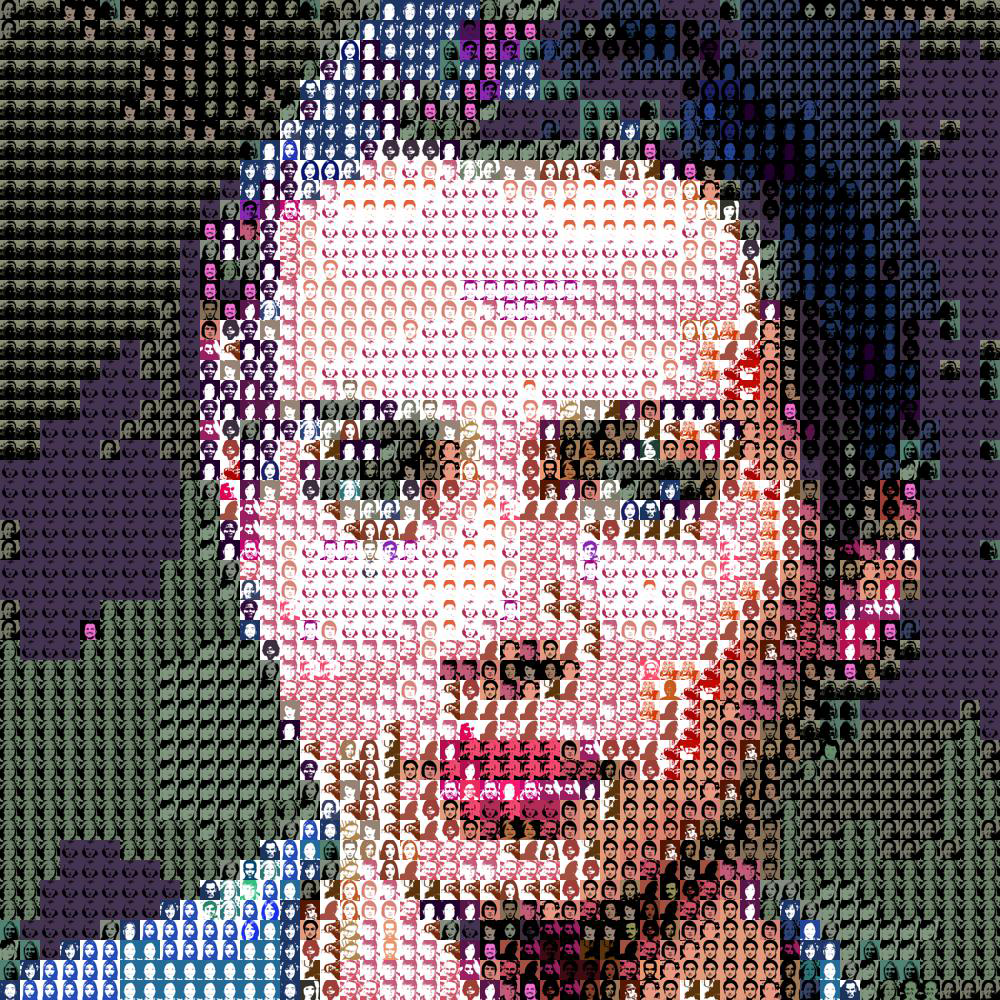J. Rosenbaum
Set In Stone
2021
Gender Tapestry
2021
Research Abstract
Computer perceptions of gender
Gender Bias in machine learning image detection and classification systems is a significant issue because the systems are implemented on the assumption of a gender binary. This assumption often excludes binary and non-binary, passing and non-passing transgender people. I will focus my practice-based research on computer visions of gender and the way that figures created by image generation algorithms are interpreted on a gender spectrum. I will train biased image generation algorithms and then observe the changes as I introduce new data and make artworks with the sample images generated during training. I will work with existing neural networks and custom trained neural networks to explore the differences between out of the box gender creation and perception and fine-tuned results. We are at the cusp of a new vision of gender and a new revolution in the way that AI works and intervenes in our daily lives. There is no better time to address these issues because the magnification of bias will only worsen unless addressed.
Bio
J. Rosenbaum is a Melbourne AI artist and researcher working with 3D modelling, artificial intelligence and extended reality technologies. Their work explores posthuman and postgender concepts using classical art combined with new media techniques and programming. J is a PhD candidate at RMIT University in Melbourne at the School of Art exploring Computer Perceptions of Gender and the nature of AI generated art and the human hands behind the processes that engender bias, especially towards gender minorities. Their artwork highlights this bias through programmatic interactive artworks and traditional gallery displays. They speak at conferences worldwide about the use of artificial intelligence in art and have exhibited all over the world. J’s artwork has been supported by the City of Melbourne Covid-19 Arts Grants and has won the Midsumma Australia Post Art Prize. J works with classically inspired aesthetics with the latest technologies to create a speculative future grounded in the aesthetics of the past to show that gender minorities have always been here and will continue into the future.
Jr@jrosenbaum.com.au
www.JRosenbaum.com.au
@minxdragon (instagram)
@minxdragon (twitter)


